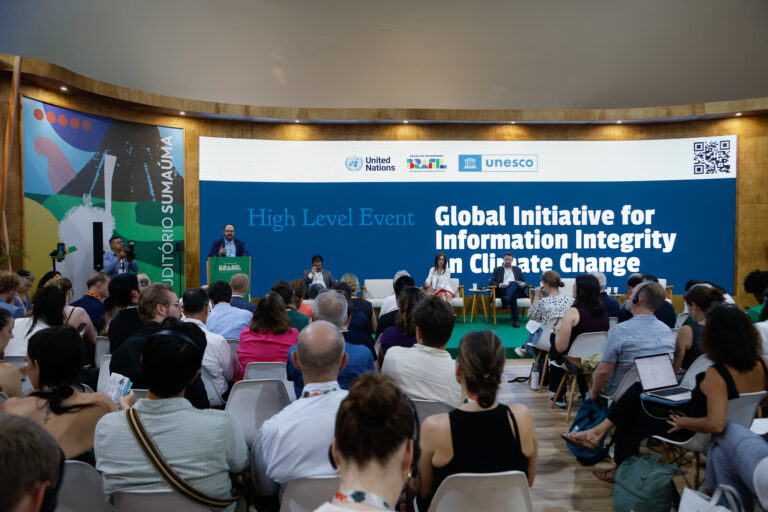- The need to control disease causing pests will rise with urbanisation and climate change.
- Insect fumigation uses harmful chemicals that have serious effects on non-target species and humans, while only increasing insecticide resistance in target species.
- There is no eradication in pest control, only management; and prevention is better than intervention in complex systems, by eliminating breeding grounds or integrated pest management.
The warm morning sun broke out from behind a canopy of leaves, passing through several intricate Asian weaver ant nests in the banyan tree of an apartment complex in Bengaluru. The busy insects soldiered on in line, marching past a foraging paper wasp and several small ‘true bugs’ (insects from the order Hemiptera like shield bugs, planthoppers, cicadas etc.) scuttling about on the ground.
One would hardly be able to believe the atmosphere of the previous evening: the synchronised clamour of windows and doors being shut at once as billows of grey came curling forth.
The song and dance we call ‘fumigation’ may be an acceptable form of ‘disinfecting’ spaces, if not for the fact that one would find the premises of this apartment complex covered in not just dead mosquitoes, but bees, wasps and other pollinators too.
Fumigation is a method of pest control where chemicals (typically organophosphorus, carbamate, and pyrethroid insecticides) are released to disinfect areas from ‘target species’ such as mosquitoes, roaches, termites, flies, and moths.

The pressing problem of pests
It is a necessity to control certain insect populations that can act as vectors of pathogens that cause deadly diseases like malaria, dengue fever, dysentery, cholera, and typhoid fever. Their rise is exacerbated in several ways by urbanisation and climate change.
Cisterns, storm drains, blocked gutters and other sewage systems can serve as breeding grounds for pests like the malaria or dengue-carrying mosquitoes and dysentery or typhoid-spreading flies. In the absence of major predators to control numbers, they grow to large populations in urban areas and begin transmitting pathogens to humans.
Rising temperatures and other climate change impacts can amplify multiplication rates of pathogens within a vector, increasing likelihood of transmission. In addition, it has also been noted to increase the rate of metamorphosis for the pupae of Anopheles gambiae mosquitoes, meaning that they can grow into biting and egg-laying adults within a shorter incubation time.
Amitabh Joshi, an evolutionary biologist, population ecologist and professor at Jawaharlal Nehru Centre for Advanced Scientific Research (JNCASR), told Mongabay-India that the primary concern of fumigation would be the impacts on human health. He also noted the issue that most residents are unaware of is what fumigants are even being used in their own apartment complexes, let alone the impacts it has on their body.
A significant number of insecticides have a ‘common mechanism of toxicity’ meaning the effect had on the target species can be similar to the effects on non-target species and humans, which could result in various types of cancer, birth defects, reproductive issues, liver, kidney and neural problems when inhaled or absorbed through skin, as seen in studies on agricultural insecticides. However, very few studies have been done on insecticides used in fumigation.

Fumigation against evolving pests, and cascading effects
Joshi also highlights the lack of awareness on population dynamics or how and why populations change in size and structure over time. “What we’re dealing with is a complex system with several non-linear parts and multiple feedback loops that all affect each other, which is tricky, because we naturally tend to think linearly,” says Joshi on population growth. “So, when you perturb a non-linear system, it is extremely difficult to predict results. We might even end up with the exact opposite intended effect.”
Insecticide resistance is a good example of this in play. When we use an insecticide to wipe out a species, it is extremely rare that all individuals of the population actually die. Perhaps only a few survive, but those few do so due to some variation in genes or behaviour. These survivors then further reproduce to create more offspring that have been ‘selected’ to survive the insecticides.
“What we are essentially setting up for ourselves is a strong selection pressure to the evolution of resistance in insects we want to eradicate,” concluded Joshi. He explained how this tends to be a function of their short life histories as well; given that multiple generations can be birthed and die within a year, they evolve rapidly. However, there is a lack of research on the ability of pollinators and other insects for such rapid evolution.
The most popular insecticides used on the market today (carbamates, organophosphates, pyrethroids) are ‘broad spectrum’ or ‘non-specific,’ meaning that when they are used to target pests, they also end up killing non-target species like bees, beetles, wasps, butterflies, etc., indiscriminately.
Insects make up 75-80% of all animal life and yet are severely understudied. They play crucial roles in recycling nutrients in the soil, to feed animals at higher trophic levels and to pollinate plants. To then allow populations to drop past a minimum threshold would be to ensure an ecological breakdown, and at present, we are already facing a global insect population decline.
In India, most food crops like vegetables, fruits, oilseed, legumes etc., rely on insect pollination. Threaten insect populations and we inadvertently threaten our own food security.
Vena Kapoor, head of Nature Classrooms, Nature Conservation Foundation (NCF) raised two concerns with regards to fumigation, the first being the possibility of bio-amplification, especially for insectivores like mantids, spiders, and birds which could result in drastic effects for the animals dependent on them as prey. The second being the fact that arthropods in general are an extremely diverse group of animals with varying evolutionary capacities to adapt to changes. Thus, depending on habitat requirements, host plant availability, levels of sensitivity, etc., we could see some species of an order continue to survive, while another is wiped out.

With pests, there is no eradication, only management.
It is impossible to forcibly wipe out multiple species without complications. There is a trade-off that must occur, and people must be willing to weigh the costs and benefits of allowing certain levels of the pest population to remain under management instead of attempting and failing to eradicate them entirely.
Joshi suggested what is needed is a shift of focus from intervention (fumigation) to prevention. Eliminating breeding grounds is an effective method to check target species population with very few side-effects on non-target species or human health.
Another target specific measure could be to employ new technology such as Sterile Insect Technique, wherein insects are captured, sterilised and then released to mate with fertile insects resulting in a natural reduction in population.
An Indian government initiative called Integrated Pest Management that aims to reduce dependence on insecticides by utilising biological control, habitat manipulation, modification of cultural practices and use of pest resistant plant varieties could be further explored to expand beyond the agricultural field to suit urban settings to manage target populations.
Joshi said we fail to address the fact that living things are parts of a system, much like the way one may treat a fever as if it is the illness and not the immune system’s response to an infection. “We react to things from a personalised perspective, which, when dealing with biological issues, does not always lead to the best decisions,” says Joshi.
Kapoor highlighted the instinctive response of humans to respond to something undesirable by asking how we get rid of it. “We don’t really reflect too much or think too deeply about what this means, what happens when we do this, what do our actions translate to for other organisms around us? A lot of this is to do with people simply not knowing, not caring or not engaging with it enough,” she said.
There is a need to examine our notions of ‘nature’ and an even more urgent need to trace the effects of actions that stem from these beliefs. It is important to understand that to want visits from butterflies means munched leaves from caterpillars beforehand, that constant pruning of manicured lawns is unnecessary, or that native flora might be a good addition to a garden.
While the lack of funding for research continues and gaps of knowledge remain, a change in perspective with an appreciation for the intricacies of our complex system could change the course of the current narrative.
Banner image: Insect fumigation. Image by Nathania Ria Prince.













